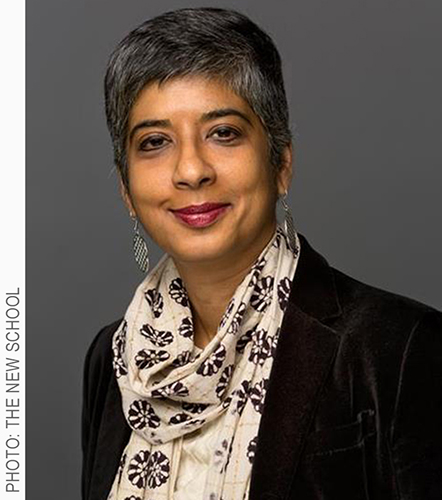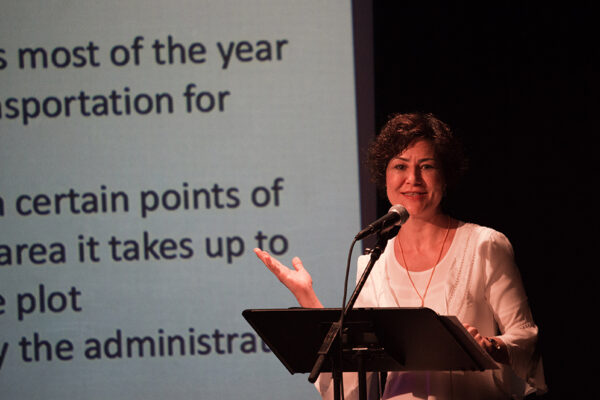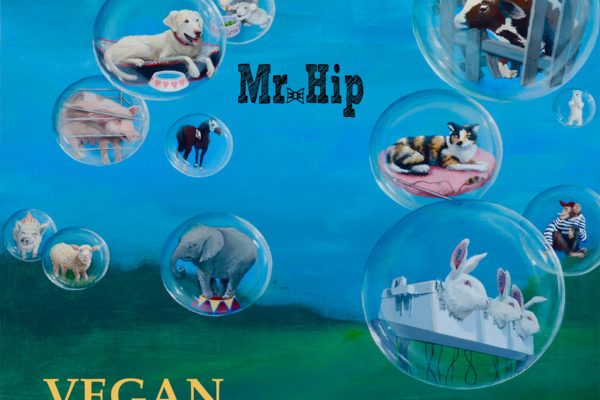Radhika Subramaniam is a curator and writer with an interdisciplinary practice that deploys such platforms as exhibitions, texts, and public art interventions as conscious forms of knowledge-making.
She has a wide array of interests, including politics of crises and surprises, particularly urban crowds, cultures of catastrophe, and human-animal relationships. She received a CAF grant in 2018 to research the story of Abu’l Abbas, the elephant who travelled from Asia to Europe as a gift from the Caliph of Baghdad, Harun al-Rashid to Charlemagne. The research was for a work of narrative non-fiction, entitled “The Elephant’s I,” which is a chapter in Animal Biography: Re-framing Animal Lives edited by Andre Krebber and Mieke Roscher, which came out in 2019. The book introduces animal biography as an approach to the re-framing of animals as both objects of knowledge as well as subjects of individual lives, a topic CAF co-founder Tom Regan spoke passionately about. Subramaniam, who outlined the work in a lecture at the Compassion Arts and Culture and Animals Festival in New York City in October 2017, wrote:
For world history, this elephant tells a story about the circuits of diplomacy and trade that linked the Indian Ocean to the Mediterranean, or fuels more speculation on the relationship of Holy Roman Christendom, with its most incipient idea of “Europe,” to the Islamic Caliphate. For art history, the beast is translated into the ivories, oliphants and imagery of elephants in the European imagination. Or else, the elephant finds his proper province in children’s fables. Although he appears regularly in any discussion of the period, Abu’l Abbas, like many other animals, remains a cipher. Through my research, which suggests the elephant was Asian and originally came from India, I have been reconstructing a plausible tale of his travels, which would undoubtedly have been in the company of a mahout or handler. . . .
“The Elephant’s I” is an experimental text that takes a historical elephant, his human companion and the writer/researcher as three prongs in the construction of the story. It explores the challenges posed to research and narrative by animal biography as well as its promise for re-articulating an interspecies relationship.
Subramaniam was the first Director/Chief Curator of the Sheila C. Johnson Design Center (SJDC) at The New School from 2009-2017 and is also Associate Professor of Visual Culture in the School of Art and Design History and Theory at Parsons School of Design. Previously, she was the Director of Cultural Programs at the Lower Manhattan Cultural Council and she was founding executive editor of an interdisciplinary journal, Connect: Art. Politics. Theory. Practice.
“I came across CAF by chance when I was looking for funding sources for my project. It was a rare find in that there aren’t many—any—funders who combine the focus on animals with art/research,” says Subramaniam.
“CAF’s mission is a farseeing one—and I say this not just because I am a grateful beneficiary of a CAF grant. It’s the job of any research to open up fields of inquiry, to raise questions, to dig deeper, to ask better questions, and it’s the task of art or literature to flesh it out, to make sensuous, to allow contradictions to be in play. It’s different from advocacy or activism, both of which have their importance. But not being directive, didactic or seeing narrow outcomes can actually be a stealthy strategy.”
On behalf of CAF, we are honored and delighted that Radhika has agreed to be a part of our advisory board.




